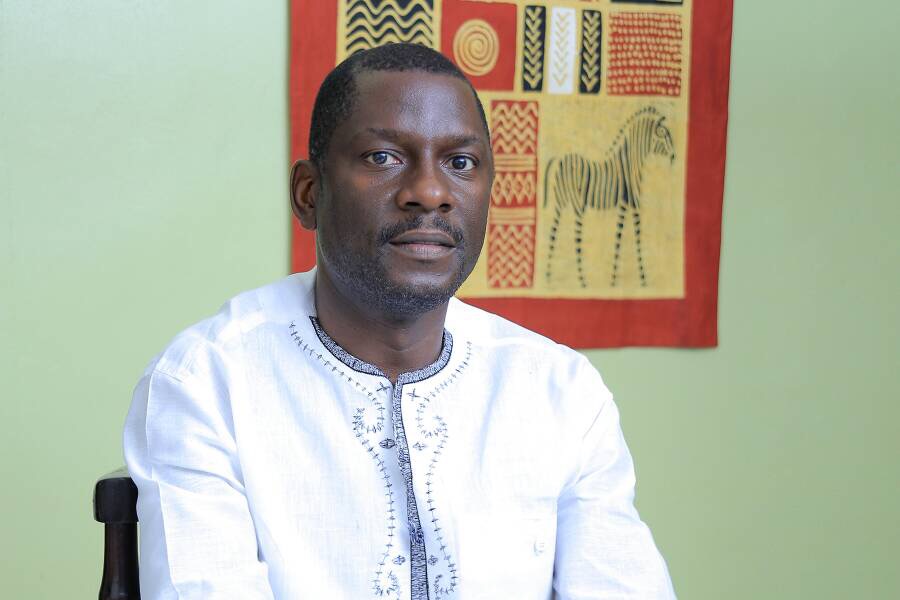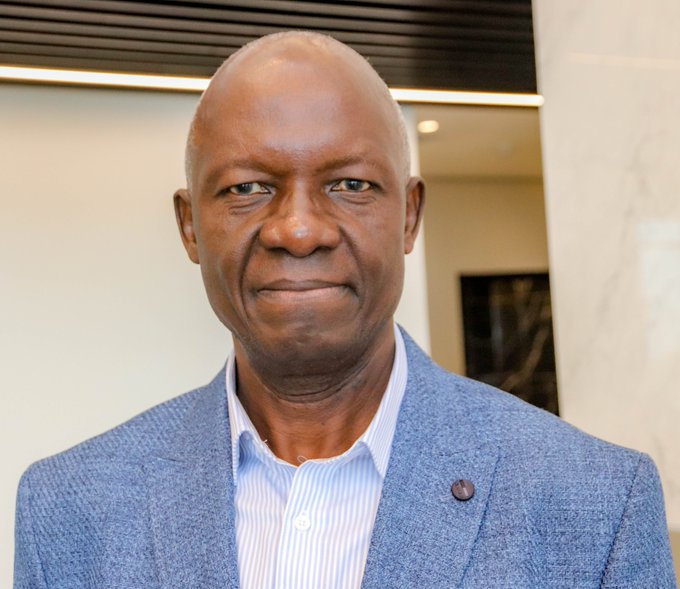Katonga-Lwera Floods
KAMPALA-UGANDA, May 11, 2023: A Makerere University don and recent doctoral graduate, Dr. Apollo Buregyeya, sounded an early warning of the flooded Katonga -Lwera stretch that has cut off the Kampala – Masaka highway.
Dr. Buregyeya’s warning appeared in a lengthy article published on africatembea.com on April 20, 2020 (See: https://bit.ly/42OCp9c).
In the article, he challenged Ugandan President Yoweri Museveni on the rising waters of Lake Victoria, during which a floating island nearly destroyed the Owen Falls Dam in the eastern city of Jinja before it was stopped in its tracks.

“I heard you talk about the swamps around the lake. It’s not only swamped you should protect. The marshlands of Lwera and Masaka are equally important to the stability of Lake Victoria’s water levels. They are major regulators of Lake Victoria’s water levels. They store a lot of water and release it to the lake at a rate only nature can predict. They also work like the kidneys of the lake system. When you give away these marshlands for rice farming, you shift the equilibrium of both the water quality and the water levels of the lake. Please stop the rice farms at Lwera. It doesn’t matter what your experts at NEMA tell you. They are not good custodians,” Dr. Buregyeya warned in the long article we have republished below this story.
Little wonder that three years later, the exact marshlands have given way to the pressure of the torrential rains that have engulfed the country of late, destroying the Katonga bridge in the central region of Uganda and effectively cutting off the main international highway that links the countries of Burundi, Rwanda, and DRC to Kenya.
The Ugandan police have not reported any human and animal causalities as a result of the river Katonga bursting its banks

Dr. Buregyeya, who has completed his Ph.D. research in Materials Science at the University of Witwatersrand, Johannesburg – South Africa this year, works as an assistant lecturer in the Department of Civil and Environmental Engineering of Makerere University.
Over a period of six years, he has been involved in teaching Construction technology, Traffic and Transportation Engineering, Soil Mechanics, Foundation Engineering, Applied Hydrology (Hydrology 2), Water Resources Engineering, Engineering Mathematics 3 & 4, Fluid Mechanics, Hydraulics, Project Design, and Introduction to Civil Engineering.
Other than teaching, he has also been supervising students, both for industrial training and project work. He has acted on several occasions as the head of the Department of Civil and Environmental Engineering.
Dr. Buregyeya is also a shareholder and senior engineer at Technology Consults Ltd., an engineering consulting firm housed in the College of Engineering, Design, Art and Technology-Makerere University.
UNRA Says:
In a statement earlier, Uganda National Roads Authority (UNRA) said, “We have reports of flooding at Katonga section on Masaka Road. Our teams are assessing the situation and exploring possible interventions & diversion routes. For now, we STRONGLY advise road users to exercise extreme caution when approaching this section.”
The Independent Magazine reports in its online edition that the water levels have risen considerably in recent days, posing a significant danger to both motorists and pedestrians attempting to cross. On Thursday, videos and photos emerged showing slow traffic movement at a section of the road where waters were overflowing onto the road.
Quoting Ms. Lydia Tumushabe, the Katonga Region Police Spokesperson, it says in a bid to ensure the safety of road users, they have been advised against using this section of the road at present. The section has since broken up under the pressure of the ruthless Katonga River.
“We strongly advise using alternative roads as we collaborate with Uganda National Roads Authority-UNRA to address the situation promptly… please exercise caution, follow traffic instructions, and watch out for updates,” Tumushabe stated.
Many Ugandans took to Twitter to condemn what they called ‘illegal sand mining and rice cultivation in the area that has altered the water catchment

Below, we reproduce Dr. Buregyeya’s article which might provide some clues to solving the current crisis:
Mr. President Yoweri Kaguta Museveni, since you advocate that scientists should be paid well, let me show gratitude by giving you free advice.
I have consistently noticed that you love knowledge and you like to freely share what you know. In the same casual manner you normally address the nation, allow me also share some insights about Lake Victoria water resources with you.
To qualify for my right to advise you, I hold a Master of Science in Civil Engineering degree (Water Resources option) and 2 related PGDs.
I did not pay school fees to attend these courses, but rather your good government and its generous partners provided the fees and allowances.
The 2 PGDs, one in Hydraulics and the other one in the hydrology of the River Nile Basin were acquired in Cairo-Egypt and paid for by the Egyptian Fund for Technical Cooperation. Due to personal reasons, I preferred a PhD in Concrete.
I still excelled in my water stuff (please forgive my casual cast). In fact, the current VC of Makerere University chaired the panel of examiners when I defended my Master’s thesis and he gave me 86%.
I still wonder why he refused to give me 100%, though I know him to be one that demands a lot from his students. Anyway, I have the knowledge your advisors on water resources don’t seem to tell you.
I am comfortable where I work. I don’t want their jobs. You also pay them poorly.
1. Lake Victoria is still not well understood.
Being a natural lake, the water balance models are not accurate at predicting its trends. The water balance models that are established on 3 variables, Inflow-Outflow=Storage, cannot be relied on for Lake Victoria.
Such models work well for Lake Nasser, an artificial lake with known boundary conditions but not for Lake Victoria.
So, the water level prediction models need recalibration and the data you now have is not reliable. Until when sufficient data on Lake Victoria is available to support calibration, you’ll open all the gates of the dams at Jinja and the water levels will continue to rise.
Unfortunately, the released water will affect the downstream because of the indecisiveness of the lake levels regulator. They don’t have reliable data so be gracious to them.
2. Lake Victoria has dried 4 times in its short history of 400,000 years:
So, if you told Mama Janet that you’ll love her until Lake Victoria dries, you need to amend that statement.
In fact, it would dry to zero water levels and people would create footpaths through it to Tanzania. It would take 40 years for the lake to regain its normal water levels.
This piece of evidence is established by coring the base of the lake and studying the properties of its layered soil deposits. Paleoclimatology is the discipline that covers such studies.
Of course, the cored soil samples from the bottom of the lake are compared with data from other materials in the same climate zone for validation.
Tree growth rings are one example that provides proxy data on past weather patterns.
The growth rings are also called annual rings so they help in predicting the age of trees. By observing the relative thicknesses of the growth rings of trees, one can tell when conditions were favorable for growth. Comparing this data with data in the known range, past data can be generated.

3. Stop the Harvesting of Natural Grown Hardwood
Please allow sufficient resources to the Ministry of Water units that are responsible for monitoring natural water bodies and their catchments.
Releasing water at the Jinja dams should have started long before COVID-19. We all saw the rain and we knew there was drainage.
The current rate of release is destructive to the downstream ecosystems and beats the logic of having a piece of infrastructure to regulate the lake levels.
We are now in a reactive mode and that doesn’t make us look in charge.
In actual fact, monitoring activities on the lake and its catchment should be a daily event so that decision-making is made in time to avoid a crisis.
I studied the sun’s activity and its influence on Lake Victoria water levels and I used data spanning 150 years. It was interesting that hourly data about the sun exists from the time Galileo invented a telescope (over 400 years ago).
Having continuous data is important but it takes a lot of resources to achieve.

5. Protect Swamps Around Lakes:
I heard you talk about the swamps around the lake. It’s not only the swamps you should protect. The marshlands of Lwera and Masaka are equally important to the stability of Lake Victoria’s water levels. They are major regulators of Lake Victoria’s water levels.
They store a lot of water and release it to the lake at a rate only nature can predict. They also work like the kidneys of the lake system. When you give away these marshlands for rice farming, you shift the equilibria of both the water quality and the water levels of the lake.
Please stop the rice farms at Lwera. It doesn’t matter what your experts at NEMA tell you. They are not good custodians.

6. The Floating Island
Now, for the floating weed/island at the source of the Nile, our own Ministry of Agriculture handled a more complex problem at Lake Kyoga in 1999. The machinery to handle this weed should be available with the Ministry of Agriculture and we don’t need to use excavators for the task. Eng. Dominic Mucunguzi should help with this weed.
But it still goes back to real-time monitoring of our natural water bodies. Buy some drones and hire good watchmen to make sure that floating islands are seen before they reach the dam and cause a power supply crisis.
7. The Geo-political Nature of Egypt and River Nile:
Lastly, the story of Egypt and the River Nile is a geopolitical one. It has nothing to do with the need for water to reach Egypt. This is knowledge I developed between 2007 and 2009 in the course of my interaction with Egyptian professors and their senior government officials who were hired by UNESCO-IHE and the Egyptian Fund for Technical Cooperation to facilitate the water resources management training programs that I attended.
There is nothing we can do to River Nile water that can stop it from reaching Egypt. The Egyptians know this very well. The reason is established in the laws of conservation of matter. What you drink, you must urinate. With irrigation comes drainage. Water will eventually drain downstream.
So, why are the Egyptians interested in the upstream part of the Nile River? It’s a strategic move to control the politics and economics of the region. They keep the Nile issues as an opportunity to establish conflict when they want to negotiate for something out of the region. They use the Nile as a smoke screen to get political attention, find loopholes and negotiate trade deals. The conflict approach to negotiation is common with state relationships.
I saw DRC play it on us when it killed some people prospecting for oil on Lake Albert. I wonder if they paid for the information we shared with them as you worked hard to stop the chance of a more complex conflict. It took them a few bullets to access information about our oil, the information we had paid for in millions of dollars.
So, Egypt knows it has Lake Nasser which can treat all forms of contamination that beats time and the meanders of Sudan. The existence of Egypt here is not about the preservation of Lake Victoria and the River Nile.
8. Swamps and Trees Do not Give Us rainfall:
So you knocked a goat. I also knocked a chicken, but mine was last year. I did not stop to compensate the owner because it was raining.
Why should a hen be on the road in the rain? I want to correct this error about the rain that you made last year. Swamps and trees do not give us rainfall. Rain does not come from swamps and trees.
A tree cannot give you more water than it takes unless it is dying. You can’t grow/increase if you are giving out more than what you’re taking in. That would be negative storage or drought. So, where does rain come from? It comes from the oceans. Your water cycle that included a tree was P.2 material.
In P.2, you were taught that 1-2 is equal to impossible. The story of trees was appropriate at that stage because you were far from the oceans. The water that Lake Victoria loses through the Nile at Jinja is regained through the rainfall from the Indian Ocean.
Otherwise, the lake and its catchment would dry. You notice you meet clouds every time you fly out to JKIA. Those clouds are always on their way carrying water to Lake Victoria’s catchment.
Forests and swamps do not make rain. It is rain that makes forests and swamps. All our forests and swamps are in locations that were determined by the dynamics of rainfall from the Indian Ocean.
Karamoja is arid because of the Ethiopian plateau. The wind carrying water from the Indian Ocean loses it to the windward side of the Ethiopian plateau reaching Karamoja when it’s dry. Do you ever wonder where trees and swamps go in the dry season?
About The Author
Arinaitwe Rugyendo
Rugyendo is the Founder and Editor-in-Chief of ResearchFinds News. He’s an accomplished journalist with a rich background in the media industry in Uganda. With over two decades of experience, Rugyendo has held various roles including cab reporter, Bureau Chief, Managing Editor, and Digital Media Editor at renowned publications such as Daily Monitor and Red Pepper. Throughout his career, he has demonstrated a commitment to delivering high-quality journalism and staying at the forefront of media trends. In addition to his journalistic pursuits, Rugyendo is currently pursuing a Ph.D. in Journalism and Communication at Makerere University. He has been recognized for his outstanding leadership and commitment to social change as a Desmond Tutu Fellow and Crans Montana New Leader. Rugyendo also serves as the Chairman of Young Engineers Uganda and Uganda Premier League, showcasing his dedication to promoting excellence and growth in various fields. With a passion for driving innovation and pushing boundaries in media, Rugyendo continues to make significant contributions to the industry. His vast experience, academic pursuits, and leadership roles make him a respected figure in the Ugandan media landscape.
















